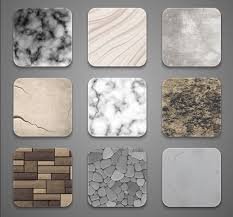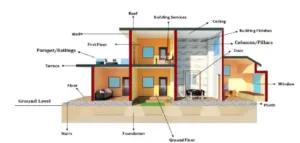MARBLE AND TILES IN HOUSE…
Marble and tiles are popular materials used in homes for flooring, walls, countertops, and decorative elements. Each offers distinct advantages and aesthetic qualities. Here’s a breakdown of how marble and tiles are commonly used in homes and the benefits they bring:
Marble in Homes

- Elegance and Luxury: Marble is a natural stone that has been used for centuries in palaces, temples, and high-end residences. It brings a timeless and luxurious look to any home.
- Applications:
- Flooring: Marble floors are smooth and shiny, giving a grand appearance to entryways, living rooms, and even bathrooms.
- Countertops: Marble is often used in kitchens and bathrooms for countertops due to its aesthetic appeal.
- Walls and Cladding: Marble wall cladding is popular in living rooms, lobbies, and bathrooms, adding a sense of opulence.
- Stairs and Pillars: Marble is often used for stairs and columns to create a dramatic effect.
- Benefits:
- Adds value to the property.
- Each slab of marble is unique, offering distinct veining patterns.
- Highly durable when properly maintained.
- Naturally cool, making it a good choice for warm climates.
- Drawbacks:
- Requires regular maintenance (sealing and cleaning) to avoid stains and scratches.
- Can be slippery when wet.
- More expensive compared to tiles.
Tiles in Homes

- Versatile and Practical: Tiles come in various materials such as ceramic, porcelain, and vitrified tiles, offering a range of styles and price points.
- Applications:
- Flooring: Tiles are used in all rooms, particularly in kitchens, bathrooms, and living areas. They are available in a wide variety of designs, colors, and finishes.
- Walls: Wall tiles are common in bathrooms and kitchens, adding both functionality and design.
- Backsplashes: Tiles are ideal for kitchen and bathroom backsplashes due to their water-resistant properties.
- Outdoor Areas: Tiles are used in patios, balconies, and other outdoor areas as they can withstand various weather conditions.
- Benefits:
- Wide range of colors, textures, and patterns, including options that mimic the look of wood, stone, or marble.
- Easy to clean and maintain.
- More affordable than marble.
- Resistant to moisture, making them ideal for wet areas like bathrooms.
- Durable and long-lasting, especially porcelain and vitrified tiles.
- Drawbacks:
- Grout lines between tiles can get dirty or discolored over time.
- Some tiles can be slippery when wet, though anti-slip options are available.
- Less luxurious feel compared to marble.
Combination of Marble and Tiles

Some homeowners combine both marble and tiles to create a balanced aesthetic. For instance:
- Marble for the living room or entrance for a grand look, and tiles in the kitchen and bathroom for practicality.
- Using marble countertops and tile backsplashes in kitchens to create a modern yet elegant space.
Maintenance Tips
- Marble: Clean with pH-neutral cleaners to avoid etching. Seal regularly to prevent stains.
- Tiles: Use appropriate tile cleaners. Clean grout lines periodically to maintain a fresh appearance.
Both materials, when used creatively, can significantly enhance the beauty and functionality of your home. Do you have any specific areas of your home you’re considering for marble or tiles?











Add comment